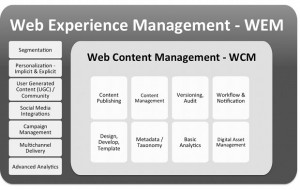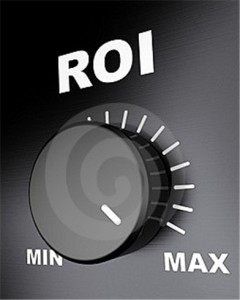B2B Demand Generation – How Does it Work?
 B2B demand generation is the process of facilitating the buying process through a combination of marketing and sales assets. The purpose of generating demand is to proactively build awareness about your solution and convert a suspect (unqualified prospect) to a customer.
B2B demand generation is the process of facilitating the buying process through a combination of marketing and sales assets. The purpose of generating demand is to proactively build awareness about your solution and convert a suspect (unqualified prospect) to a customer.
Effective demand generation aligns your marketing and sales teams through an integrated system, such as the combination of our Lead Management Automation™ platform with the Salesforce.com’s Sales Cloud CRM application. To maximize results, a dem gen strategy involves having the two function areas share information and knowledge.
Data from each silo should be analyzed to determine what has worked within each discipline. The most productive strategies should be combined to fulfill the four primary phases of demand generation:
- Awareness
- Interest
- Preference
- Commitment
These four phases in the demand generation funnel move suspects to buyers through distinct approaches and unique objectives.
Awareness
The first objective is to open eyes. Creating awareness can be achieved through inbound and outbound channels and is focused on connecting a potential buyer with a problem to your solution.
Exposure is critical during the awareness phase, so experts suggest deploying as many touch points as possible. Frequency is important as well because it can often take up to seven exposures to register in a suspect’s mind. Remember, before a suspect can show interest he must first be aware that your solution exists.
Interest
The next phase is to stimulate interest in your solution. What makes your solution appealing? What features are commonly in demand? Building interest requires an sharper focus on what your solution can do for your suspects. Once buyers are made aware of your solution, the strategy used during this phase is to target needs and match benefits.
Here is where you strive for TOMA (top-of-mind-awareness) through a series of messages that escalate need/benefit match-up Buying triggers should be targeted during this phase. Using the data that was analyzed during the development of your demand generation strategy, highlight the most appealing features or benefits to generate interest.
Preference
This phase may be owned by both marketing and sales. Now the objective is to become the preferred solution for your suspects. Prior to buying, most B2B prospects become interested in a few options. This stage moves them to a point where, if a purchase has been approved by management the suspect will be interested in a sales engagement with your company.
To be considered a preferred choice means that most of a buyer’s objections have been overcome. At this point your target is close to making a decision – and your solution has been deemed the best solution for her company.
Preference for your solution can be established through deep marketing engagements such as webinars or white paper downloads. Qualifying sales calls can also develop preference within your leads.
Commitment
Your sales department should have ownership of the commitment phase. Here BANT has been confirmed and final objections are overcome. Commitment is gained through advanced questioning intended to root out hidden objections and preparing your target to buy your solution. Demand has been cultivated, the lead has been nurtured, and your solution has become the clear option for your target.









